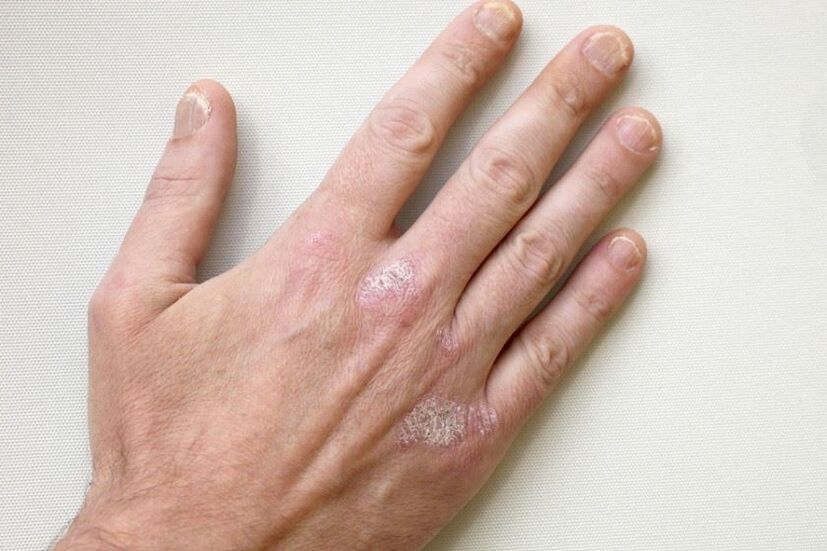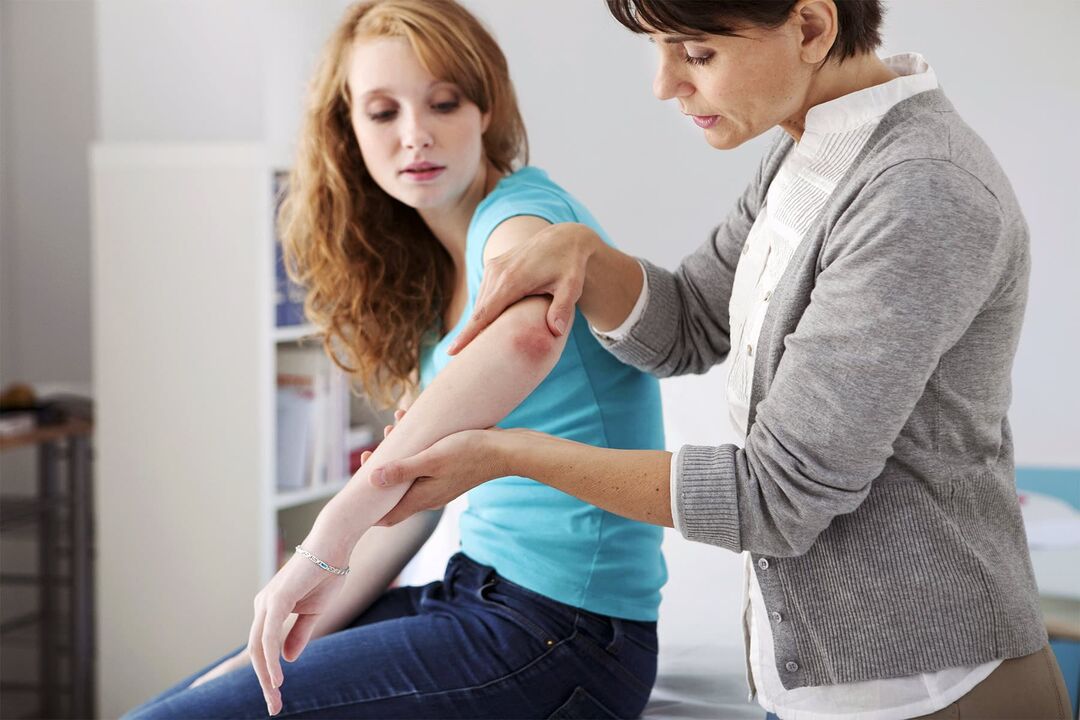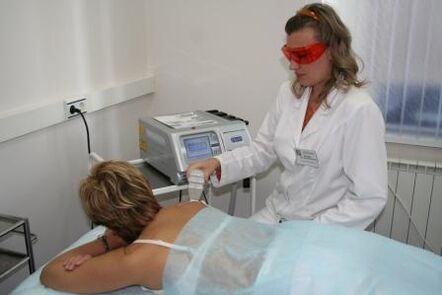In the past few decades, dermatology has increasingly begun to deal with cases of psoriatic dermatitis. Statisticians note that most often these cases affect people with fair skin. And although experts have not yet determined an age limit for the spreading disease, still the most active phases of the disease are recorded precisely at the age of 15 to 45 years. In terms of prevalence, psoriasis can now affect every 25 people on the planet, which in general, according to the WHO (World Health Organization) for 2016, is about 4. 2% of the total world population.
What disease is psoriasis and what external signs does it have?
The name of such a wound is given according to the characteristic external sign - red plaques and papules with scales, which are formed as a result of a rash, accompanied by a feeling of itching and inflammation of the skin. The disease psoriasis is also called scaly lichen and has its own rather extensive classification of types, symptoms, causes that provoke the appearance, progress and exacerbation of the disease. The general picture of the pathology today is such that it does not give doctors a clear idea of its unequivocal origin and methods of treatment. Therefore, doctors must find ways for a partial cure together with the patient.
The definition of what psoriasis is today is accepted by all specialists as a non-infectious disease that occurs mainly for various reasons and must be treated carefully, extremely carefully, under the constant supervision of several specialists, not just a dermatologist. The word psoriasis itself means "itch" (from the Greek term "psora"), "scab" (from the English term, which is also spelled "psora"). Diagnosis of the disease is carried out comprehensively, not only through skin tests or blood tests.
More information:The specificity of the disease, which has not been fully studied, is such that patients must prepare for persistent, persistent and long-term healing, as well as alternating periodic exacerbations with remissions, stages of relief that last from several weeks to several years.
Classification of psoriasis types

When experts want to accurately determine psoriasis in a sick patient, what are these rashes on his skin and the unbearable desire to constantly scratch the wounds, what kind of disease the disorder belongs to, what the patient suffers from, then experts can focus on a special classification of diseases. Moreover, she is not alone, today there are at least four that should be reviewed briefly for an overview.
According to ICD-10
According to the International Classification of Diseases in the 10th revision, such dermatitis is divided into the following types:
Plain or plaque-shaped . Prevalence – 90-95%. Manifestations - papulo-scaly structures with a gray, white, pink hue. As they grow, whole "islands" and "lakes" of diseased skin are formed.Generalized pustular or "Impetigo", "Tsumbusha" disease, exudative . It starts with blisters and blisters containing fluid (exudate). Ulcers and self-infection form after rupture.Persistent or Allopo epidermal disorder, Setton or Crocker acrodermal disorder . Fluid or pustular formations in plaques and papules are sterile and do not have widespread self-infection. Fingernails and toes are often affected.Palmar and plantar lesions . Small ulcers on the palms and soles that do not self-infect. It makes the patient's quality of life very difficult when walking and working with hands.teardrop shaped . Small purple, pink, gray dots on the body most often begin to appear after a severe sore throat, streptococci, pharyngitis and other infectious viral diseases.Arthropathic type . Damage to the joints of the fingers, hands, knees, lower legs. Prevalence - 10% of all patients with psoriasis.Other, reverse and unspecified . Smooth spots with a low percentage of flaking that appear on delicate areas of the skin.
According to this classification, which reveals the essence of what this or that type means, what the disease is, what psoriasis is, the pathology is assigned a special code - L40. Different numbers can be added to this code to indicate a specific type of illness.
According to clinical parameters
The disease can also be classified according to clinical criteria, which are expressed as follows:
- by location - parts of the body are indicated;
- according to clinical pictures - nature, texture of psoriasis;
- according to progressive stages - progressive, stationary, regressive disease;
- according to the manifestations in a given season;
- by area of skin areas - less than 20% of the epidermis is affected, more than 20% or the entire skin.
According to the American classification
The US National Foundation, when determining psoriasis, what kind of disease it is, its type, classifies it in the following order:
- mild skin lesions - less than 2%;
- average prevalence severity – from 2 to 10%;
- severe stage of skin damage - from 10% and more.
According to the PASI index
Another international approach to determining the wound of psoriasis, which is in the arsenal of medical diagnostics, distributes the types of the disease according to the following principle:
- the presence of the PASI index ranges from 0 to 72 values;
- the index indicates the severity of the dermatitis;
- Only specialists calculate the index.
Doctors can use any of these classifications when determining the type of disease, but practice shows that the ICD-10 system is most actively used. Without a precise definition of the type, it will be difficult for doctors to understand what kind of disease psoriasis is and how to treat it.

General symptoms
All doctors and researchers are convinced that psoriasis is not contagious and cannot be transmitted from sick to healthy. Characteristic pustular-scaly rashes are called papules if their formation is initially a swelling with fluid, which then bursts, resulting in a wound, drying of the coating and scales. "Papula" from Latin means "nodule". But if the redness is not watery, their bumps above the surface of the skin are compacted, then turn into wounds from constant scratching, suppuration and the formation of scales, then we are talking about plaques.
Note!The disease psoriasis is something that will always have scaly formations above the surface of the affected skin. "Squama" from the Latin means "scales", so the diagnosis can be written in the order of the examination sheet: "papular disturbance of the epidermis".
Symptoms of psoriasis
When we define psoriasis, we focus on its symptoms, which can be represented by the following unified list of manifestations:
- Papules are swellings above the surface of the skin that have an infectious or sterile fluid inside.
- Plaques are red spots that grow and fester over time.
- Plaques can be gray, reddish, yellowish, or purple with dots.
- The texture of the surface of the diseased skin varies from wet, pustular, to dry with scales.
- Flaking and flaking are characteristic of all types of disease.
- The general condition of the patient varies from irritability, nervousness to drowsiness, fatigue and apathy.
Stages and degrees of development of psoriasis
The stages show not only the characteristics of what kind of disease psoriasis is and its types, but they can also tell the doctor how to deal with the disease. It is usually divided into 3 stages.
Weak stage
- papules and plaques are rare and single;
- no unbearable itching;
- No severe swelling yet;
- often occurs after stress or severe infection.
Intensive stage
- defined as Koebner syndromes;
- lesions appear unexpectedly in different parts of the human body;
- fusion and growth of papules and plaques into entire "paraffin lakes";
- pain and itching are characteristic of this period.
Exacerbation of the disease
- form of scales;
- dry skin;
- lesion rashes no longer grow;
- the scales fall off;
- the skin hurts;
- the thickness of the skin where the plaques are located increases.
For reference:remission is a separate stage and is considered as calming down the pathological condition.
Reasons that provoke the appearance of the disease
Despite the fact that no answers have yet been found to the questions of what disease psoriatic dermatitis is, what are the reasons for its appearance, naturally some prerequisites are already being shown that can provoke the appearance of the disease.
Such patterns indicate the following probable causes:
- Hereditary predisposition.
- Weak immune system.
- Recently suffered severe psychological trauma, exposure to infection, virus.
- Side effects of drugs.
- A sudden change in the climatic conditions for life.
- Allergies in humans.
- Imbalance of the gastrointestinal tract, endocrine, excretory, cleansing systems.
- Slow metabolism (metabolism) due to a sedentary lifestyle and improper nutrition, sleep and wakefulness.
important!The wound can come out even after a severe sunburn, constant rubbing of synthetic fabrics on clothes in areas of the body where the skin folds. Even excessive consumption of low-quality food (with an abundance of chemicals, preservatives, food synthetics), alcohol, drugs (toxic substances) or tobacco can affect an exacerbation. All this was recorded by the method of exclusion - for example, when the patient was limited by bad habits, his condition improved.

Diagnosis of psoriasis - what is it?
If people who ask about psoriasis, what it is and what doctors they should contact, have already discovered similar symptoms in themselves or in their relatives, friends, then they should first contact a dermatologist. An examination will then be assigned, which may include a number of other highly specialized specialists:
- histologists - study of blood cells in this case;
- immunologists - identification of the cause of the body's weakened resistance to viruses;
- endocrinologists - if there is suspicion of disturbances in hormonal levels and the functioning of the endocrine system;
- infectious diseases - detection of the presence of infections or viruses in the human body;
- nutritionists who will determine the proper nutrition of the patient and other specialists.
Diagnosis is carried out using the following mechanisms and techniques:
- External examination of the affected areas of the skin.
- The blood test will show whether the joints are affected by the disease.
- The biopsy reveals the stage and the check (diagnosis of a certain type of disease).
When determining the specific type of psoriasis, only the Internet does not help. In addition, encyclopedic references are usually filled out by any Internet user, both familiar with the specifics of the disease and laymen.
Note!A biopsy is one of the main diagnostic procedures in which a piece of the affected skin is taken for laboratory examination. Its results show the level of T-lymphocytosis, which cells are strong and which are weak.
Difficulties in the life of patients with psoriasis
When the patient first encounters psoriasis and does not know what kind of disease has come to him, he tends to experience the following conditions that accompany the course of dermatitis:
- depression;
- inferiority complexes;
- difficulties in the social sphere - people, due to ignorance, often believe that the disease is contagious and stop communicating with the sick person;
- cardiovascular disorders - sometimes even a heart attack;
- pressure imbalance - hypertension;
- diabetes mellitus - type 2 is especially common;
- you must limit yourself in food and drink;
- you have to adapt to an active lifestyle, which is extremely difficult to do when your psychological mood is depressed;
- physical discomfort - difficulty wearing clothes, showering, bathing, moving arms, legs, sleeping, etc.
In the same way, all this affects those patients who have not faced the disease for the first time, but are already mentally prepared to face it and work hard to reduce its intensity.
For reference:remissions (stages of waning of the disease) can last for several years only with a competent approach to therapy and the prescription of courses, methods, methods of treatment.

Psoriasis treatment methods
When the doctors themselves do not fully know all the reasons for the exacerbation of the disease and how all this can be removed forever, this also greatly affects the mood of the patient himself. But you just need to convince yourself that if the disease cannot be cured, then you can improve your quality of life for a few years. Therefore, psoriasis should be treated only with an integrated approach of all practices, methods and methods that are available in nature. Even doctors do not neglect folk remedies, only if the patient discusses one or another method with the doctor in advance.
Traditional methods
As soon as they determine the type of dermatitis - psoriasis is also dermatitis, what is the disease, its type, doctors immediately begin specific procedures that allegedly give a positive effect in the end.
Treatment begins with the following procedures:
- The affected areas are disinfected to prevent self-infection.
- Mandatory relief of inflammatory processes with drugs.
- Plaques must be resolved and special drugs are prescribed for this.
- The same applies to scales - so that they do not fall painfully, they are softened with lotions, applications with various softening ointments, tinctures, mixtures.
- Injections and tablets are prescribed - for example, an immunosuppressant that restores the work of the immune system along with improving the psychophysical condition.
- They use ultraviolet radiation, purify blood using plasmapheresis and other methods.
- Sanatorium-resort treatment with mud and salt water. For example, resorts in Israel on the Dead Sea. The method is not cheap, it should take 28 days, but it is 100% effective.
- Taking salt and herbal baths.
- Special diet, exercise.
In addition to the above methods, operations are also performed on the valve of the small intestine, which is responsible for cleaning the system. Usually, after such operations, patients feel better for the next 5-6 years.
important!The base drug will always be an antimetabolite from the group of structural analogues of folic acid, which is delivered into the body by intramuscular injection.
Traditional medicine for psoriasis
The disease can also be treated with traditional methods, as some plants, seeds and fruits have their own healing properties. This is a budget option for those who cannot take advantage of resort excursions. At home, you can prepare healing baths, make various ointments with Kalanchoe, honey and other ingredients. Only the patient should always consult their doctor first. Here, too, you must follow a strict diet, sleep, work and physical activity.
Additional measures
Any attending physician will always prohibit the patient from being in the sun for more than 6 hours a day for 2 sunbathing sessions. At the same time, the sun should not be at its zenith and burn strongly, otherwise you can only provoke burns and worsen the condition. Apart from sun exposure, psoriasis can also be cured temporarily by adding a special diet. The most common system now is the Pegano diet. In addition, you should eliminate all the usual whims, such as tobacco, alcohol, an abundance of sweets and other hobbies.
More information:A crash diet is not recommended. In addition, you should always remember your intestines, which should be supported by the presence of fiber and sunflower oil. That's why you can eat sunflower seeds, as well as add to your meals various permitted foods rich in fiber.
5 preventive measures for people prone to psoriasis
So one has no questions about psoriasis - what kind of disease it is and how to treat it, one should listen to several recommendations from experts on how to protect oneself from such a disease as much as possible. Pay attention to this list of 5 basic recommendations, even if you do not have a predisposition to this type of disease:
- Beware of various infections, dress warmly, do not catch a cold, create the most positive attitude in life.
- Move actively, maintain normal nutrition, sleep and wakefulness.
- Give up all bad habits or hobbies such as baking, sweets that contain a lot of sugar.
- Wear clothes mostly made of natural fabrics.
- Any painkillers or other medications should be taken after consulting a doctor and should not be self-medicated.
For reference:A slowed metabolism leads not only to psoriasis, but also to obesity, liver disease, kidney disease, heart disease and other dysfunctions. That is why the reduction of carbohydrates in the menu, more walks in the fresh air and physical exercises will help everyone to always stay healthy!
There is still no complete treatment for this disease, specialists are discovering the causes, as cases of psoriatic diseases are being registered. Therapeutic procedures are very long, long and difficult. The patient will need not only a change in lifestyle, but also self-monitoring, along with keeping a diary where he will record all his conditions. Therefore, any delay in contacting the doctors will only worsen the situation. Patients should not suffer like this, be afraid to show themselves to doctors, it is better to immediately start looking for a solution to the problem than to accumulate it like a snowball.























